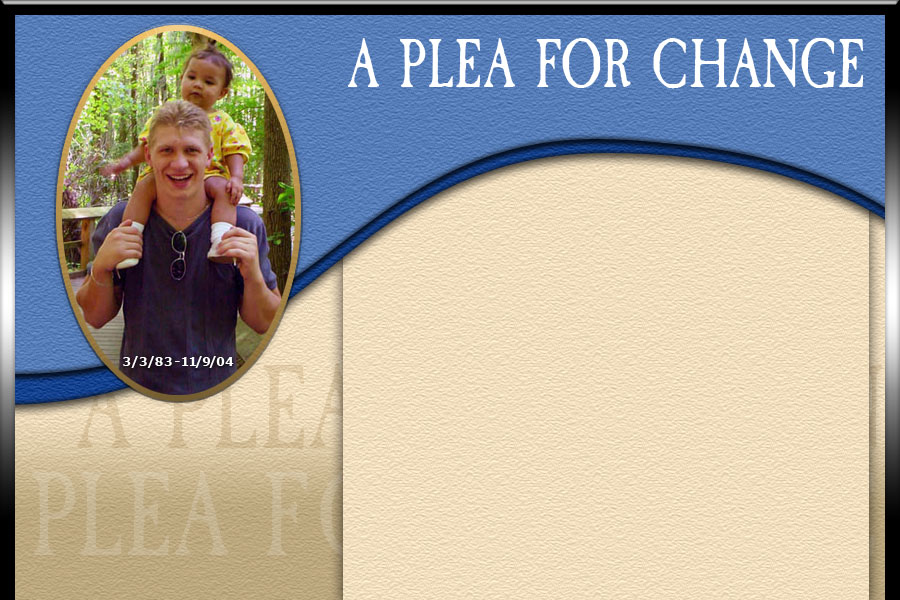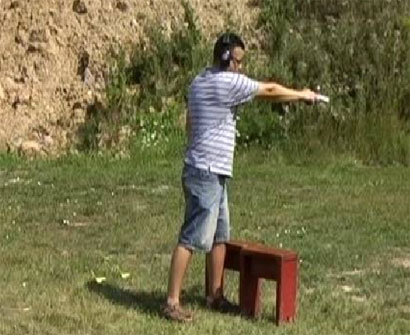
REQUIRE AN UNBIASED POLICE REVIEW PROCESS
E. The Defendants Third Reenactment
Contradicts Officer Gonzales’ Initial Statements to
the Kenosha Police Department, his Sworn Testimony,
his Formal Discovery Reponses, and
the Defendants’ Second Reenactment.
- Following the second reenactment, which, as noted above, could not take into account the location of the spent shell casing, the plaintiffs received notice that Officer Gonzales conducted a third reenactment.
- The stated purpose of the reenactment was to determine shell ejection patterns of Officer Gonzales’ gun.
- In this third reenactment, Officer Gonzales went to a firing range and he “canted his weapon counter-clockwise to simulate, to the best of his recollection, the angle he held his duty weapon at when he shot Michael Bell on 11/9/04.”
- Officer Gonzales canted his weapon so far to the left that it is almost perpendicular to the ground, or “what a lot of people kind of commonly call gangster style shooting.” Officer Gonzales canted his weapon as follows:
- When Officer Gonzales held his weapon in the “gangster” style as shown above, “[t]he results … [of the shell ejection pattern] were remarkably consistent…: All rounds ejected from the Smith & Wesson landed in different locations to the left of Officer Gonzales.”
- The third reenactment is implausible. The cant of the gun in the third reenactment is inconsistent with the cant of the gun in the second reenactment and with Officer Gonzales’ testimony that he was canting his gun slightly to the right, not all the way to the left.
- The cant of the gun in the third reenactment is also inconsistent with Dr. Kelley’s autopsy findings.
- Because the muzzle stamp imprinted on Bell’s head clearly shows the sight of the gun at the top of the entrance wound, and the recoil spring guide of the gun is clearly imprinted at the bottom of the entrance wound, Bell’s head must be positioned to accommodate these landmarks on Officer Gonzales’ gun. The only way to line up the muzzle stamp to Officer Gonzales’ gun’s position as shown above is to have Michael Edward Bell’s face pointed towards the sky.
- As shown in the second and third reenactments, it is forensically impossible that Bell’s face could have been pointed towards the sky without his neck being extremely hyperextended or without his body being bent backwards.
- There is no evidence that Bell’s neck was extremely hyperextended, as Dr. Kelley found no evidence of trauma to Bell’s cervical spine.
- Kenosha Police Department, per the chief of police, ratified the defendants’ unlawful conduct.
- Then Chief of Police Dan Wade closely reviewed the events of November 9, 2004.
- Then Chief of Police Dan Wade read written reports and considered the verbal opinions of supervisors, whom he relied upon and trusted.
- Then Chief of Police Dan Wade knew that the defendants claimed Officer Gonzales was standing at the front of the car at the time he shot Bell, that Officer Gonzales angled his weapon towards the windshield when he shot Bell, and that Bell was shot in the right side of the head.
- Then Chief of Police Dan Wade knew that the defendants’ account was impossible.
- On November 11, 2004, then Chief of Police Dan Wade declared that the defendants acted within policy and procedure.
- The Kenosha Police Department did not close its investigation of the Bell shooting until December 14, 2004.
- The defendants were later awarded a “Meritorious Award” from the Wisconsin Professional Police Association (“WPPA”).
- The current Chief of Police, John Morrissey, confirmed that the defendants acted meritoriously and the WPPA award was justified:


Q: Well, sitting here today, do you believe that the award was justified?
A: Based on my understanding of this investigation and what occurred, yes.

